Ensuring workplace readiness doesn’t just mean having your office spic and span or your technology ready. It also means equipping your employees with the right set of skills to tackle their jobs, and having the right workplace culture to ensure no one becomes disengaged. In this episode, Dr. Diane Hamilton sits down for a lovely conversation with Dr. Andrew Temte, President and Global Head of Corporate Learning at Kaplan Professional. Dr. Temte talks about the need to upskill and reskill billions, and talks about success with balance. Don’t miss this provocative discussion that is sure to make you ask questions about workplace readiness.
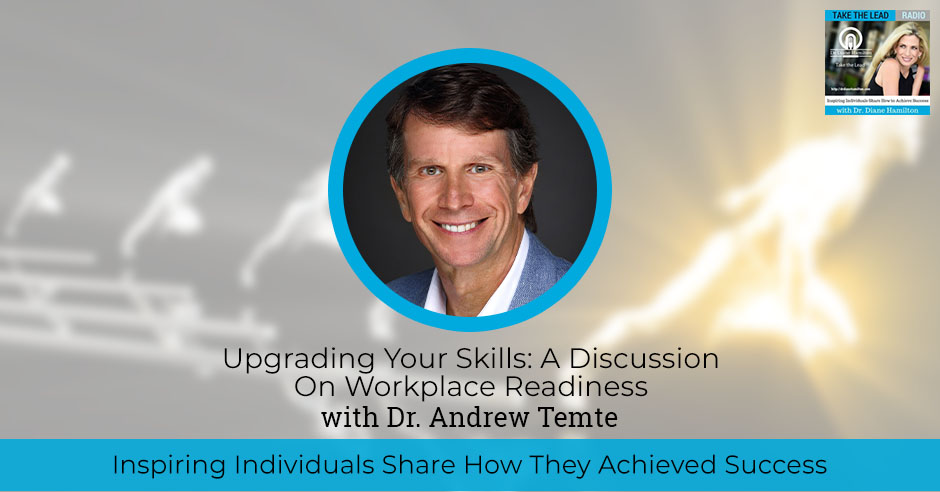
I’m so glad you joined us because we have Dr. Andrew Temte here. He has a book called Balancing Act: Teach Coach Mentor Inspire. He’s done all kinds of things with corporate learning at Kaplan. He’s been the CEO of Kaplan Professional and Dean at Kaplan University. There’s a list of backgrounds on him that’s super impressive.
—
Watch the episode here
Listen to the podcast here
I am here with Dr. Andrew Temte who is the President and Global Head of Corporate Learning at Kaplan North America. A thought leader on issues related to workforce rescaling and upskilling. His articles have appeared in many media outlets. He is the author of Balancing Act: Teach Coach Mentor Inspire. It’s so nice to have you here, Dr. Temte.
Thanks for having me.
Do you care if I call you ‘Andrew’ or ‘Andy’ because I could have butcher your last name?
Andy is fine. As the joke goes, “Just don’t call me late for dinner.”
I won’t do that. You can call me Diane. I was interested in the work that you have done. I have a background in education, and what you worked on in many different realms of education has been fascinating. A lot of people would like to know your backstory because Kaplan is such a big name and people want to know how you have reached that level.
I started off wanting to be a professor. That was my goal when I was in my late twenties. I wanted to teach at the collegiate level. I started with the undergrad, Master’s, PhD and leading to a PhD in Finance. I met a guy named Carl Schweser. Carl was the Chair of the Finance Department at the University of Iowa. He and I hit it off right away. As a graduate student, he and I started working together on a side project that he was developing, which was training individuals how to take and pass the Chartered Financial Analyst Examinations. This was in 1989 and 1990. We started working together and all of a sudden, by 1994, that business was taking off.
We were teaching globally. I finished my PhD but instead of going into academe right away, we took the business and ran with it, and ultimately sold the business to Kaplan in late 1999. I have been straddling both the professional education industry and higher education ever since. Like you, I have been the Dean of a college and I was the President of the College of Business and Technology for the old Kaplan University, which is now Purdue Global. I ran a small college in New Hampshire for a time and tried to take that into an online-first workforce development model. It’s an interesting career path. I thought I would be with Kaplan for a few years and do the serial entrepreneur thing. I fell in love with the mission and vision of Kaplan, and I have been there ever since.
I always said that it was fascinating with Purdue Global and now with the University of Arizona and Ashford has combined. Some of the things that have happened in online education have been fascinating to watch. You learn so much in education but what you don’t talk about often is how many of these educators have done real-world things. They are not just getting their PhD. They are doing and experiencing real-world situations. I love that you wrote this book, Balancing Act: Teach Coach Mentor Inspire. I have had the opportunity to do a lot of those things that I hope I’m inspired. One of the boards for which I work is a mentoring company, which they were doing as an online situation, which is unique for mentoring. I want to talk a little bit about that. I want to go into the reason you wrote this book in the first place.
[bctt tweet=”We’re going to take that failure and we’re going to learn and grow so that we can be a better version of ourselves the next time around.” via=”no”]This book started its initial form back in 2017. I was starting to get out of my shell and share my stories in forums like LinkedIn in publishing and other places. By the time we’ve got to early 2020, the plan all along was to take these stories and put them into a book format. The pandemic kick-started that process by spending a lot of time at home in early 2020. I decided, “Let’s take these stories and see what we can do with them.” The original construct for the book was to tongue firmly in cheek here tales of a mid-level senior executive.
I have lived most of my professional career, not at the pinnacle of leadership for a major corporation but one level down from that. There are thousands and thousands of people that fit that same category. I wanted to tell a series of stories that would resonate both with new leaders, upcoming managers. Also, individuals that are not at the very top of their organization, just below that level and the challenges and opportunities that come with collaboration and working across teams, and getting the most out of the dynamic and complex business environment.
There is such a wide range of leadership. That’s what’s so fascinating. When we first went to college, we didn’t use the word leadership. There was only management back then. We start to differentiate between leaders, managers and some of the things that are unique to being in top positions and mid-level positions. You start your book with an interesting quote. You say, “Success without balance is often more disastrous than failure with balance.” What do you mean by that?

Workplace Readiness: To maximize the value of your company, the individual that works in accounting or finance should understand how the whole business works, how the whole flywheel functions.
I thought a long time about whether to include that or not because it is a little convoluted. You have to read it a couple of times to get the point. The point comes across as the book unfolds because what I have learned in my career is I would rather fail in a balanced fashion, have open ears and an open mind in a collaborative working framework versus success where I’m being directive and focused. Also, not listening to my people not being inclusive, having diverse comp and not having diverse conversations. Failure with balance, to me, means that you are going to take the old adage. We are going to take that failure. We are going to learn and grow from that so we can be a better version of ourselves the next time around versus the opposite, which is success without balance, where ultimately, you are going to tip over and reach a place where you have a quite disastrous outcome.
That’s an interesting point because my research is based on curiosity and the things that keep us back from being curious and in the status quo. Failure was one of the four factors. I found fear, assumptions, the voice in your head basically, technology, the over and underutilization of it, and the environment were the things that held people back. As you are talking about failure and collaboration, it brought to mind having Amy Edmondson on the show when we talked about that and her work at Harvard. Her TED Talk was big.
[bctt tweet=”A billion people need to be really skilled, not just upskilled, but reskilled globally over the next 10 years.” via=”no”]It was talking about how they’ve got the Chilean miners out from underneath the rock disaster. They did that through their developed curiosity to work collaboratively. We avoid failure in some ways because of the fact that we are collaborative. That’s great that you brought that up. It also brings up what is a big problem in the workplace that curiosity can help with is employee disengagement. You go right into that in your book. Why did you start with that? I would like to know.
In employee engagement surveys, which are all over the place and if you work for mid-size and large companies or even small company, you get the employee engagement survey every year. Everybody asked to complete it. Most of the attention from the results of those surveys is focused on the movable middle. That population may be on the fence but can move into positive territory. There’s this thin red line on the bottom of the charts and graphs that you see and those are the small population in your company that is actively disengaged.
We tend to ignore that part of the population from engagement surveys because we figure, “We are never going to get to those people anyway, so we will focus all of our development efforts on the positive.” Those actively disengaged in your organization are destroying economic value. They are caustic and toxic from a team environment and break down team cohesion. If you are trying to build an environment of organizational health and trust, the reason that we are using the word actively is they are actively working at counter purposes to that. I wanted to shine a brighter light on that part of the employment-population.
We hear from the surveys like Gallup, about $550 billion a year is lost. It’s an important thing. You look at it as the rotten apple in the barrel will infect other parts of your system if you have people who are actively disengaged. I had Doug Conant on the show and I’m sure you have probably seen him and many of the books and things that you have dealt with because of how many times the case study comes up of how he turns Campbell Soup around. He focused on everyone when he wrote those 30,000-plus handwritten notes in his engagement went up dramatically from that. We learn a lot from those past case studies. There’s so much we can do to help people with engagement. I’m glad we touched on that. I also noticed that you were involved with the World Economic Forum’s Reskilling Revolution. People will be interested to know what that is.

Workplace Readiness: The work that the skills consortium are doing is shining a brighter light on the value of skill portfolios as alternative pathways to workplace readiness.
I’m very fortunate to be able to serve on the skills Consortium for the World Economic Forum. Back in 2018, they started their research on this topic with BCG and now collaborating with PwC and others to identify that in an environment where computers can now think at low cognitive levels. With ever-increasing cognitive levels, more and more of the work that humans do in the workforce will be disrupted. By their estimates, they believe that up to a billion people need to be reskilled and not up skilled but reskilled, globally over the next couple of years. Even if World Economic Forum is incorrect and that’s only 500 million people that are still more humans to be reskilled than our higher education system can handle. Moreover, most folks that look reskilled don’t want to take themselves out of the workforce for 2 years, even 1 year to reskill for another job.
What the World Economic Forum and the work that the skills consortium doing is shining a brighter light on the value of skill portfolios as alternative pathways to workplace readiness. I have been doing a lot of work in writing. Nobody wants to replace the college degree. That’s not the point here. The point is to have other pathways using non-validated, non-degree credentials that have currency to employers to send signals of workplace readiness, instead of going back to your local university and taking yourself out of the workforce.
[bctt tweet=”We need to eliminate the term soft skills from our vernacular, because there’s really nothing harder to learn.” via=”no”]It’s such an interesting discussion. I have had Olin Oedekoven on the show who does Peregrine, I’m sure you have seen a lot of this testing that they do. I have worked with different leaders. I have sat in on board meetings about this. What are we going to do? Is it going to be a certification? I remember years ago, I was Editor-in-Chief of an online website. I remember interviewing somebody who was talking about how education was going to become à la carte and you would maybe take this from this school and this from that school, and maybe keep things through the blockchain technology to keep track of everything. It’s going to be fascinating.
That’s what led to a lot of my work in curiosity because the problem we are seeing is that curiosity is tied into the engagement and all that. Engagement is what people are passionate about doing. If we don’t allow people to ask questions, ask them questions, and have this the sense that everybody is allowed to explore and learn in whatever ways that we need to learn, all this reskilling, upskilling or whatever we want to call it, that’s going to be a lot easier. If we know now what do people like, what don’t they like, why are they in this job, maybe they should be in something else. Maybe that transition would be a little bit easier? Could we be doing more with curiosity? Where do you think it plays a part?
Curiosity leads into this concept of what we call the clay layer in business, and I would put both people and processes into that category of the clay layer. What I mean by that is that there are entire swathes of people, especially middle management who have become disenchanted. They are maybe on the verge of being disengaged. In their twenties, they were bright-eyed and ready to take on the world, and then something happened, either a bad boss, kids happened or some life event changed the trajectory of their careers, and they have and they feel stuck. They become part of that population that sits back, is not curious, as you pointed out, and either waits for things to happen to them or puts change in the category of, “If I wait long enough, this too shall pass.”

Workplace Readiness: If we really want to gain value from diversity, equity, and inclusion initiatives within our business and across society, we’ve got to learn to understand how humans in the world of work tick and be able to listen carefully to other perspectives.
You add the process on top of that, which is if we are going to reskill a billion people by the early 2030s, we’ve got to be thinking about new ways of hiring, new ways of identifying talent. This is no offense to my partners that work in human resources but we’ve got many legacy systems like the job description. It needs to be fundamentally altered. Our hiring practices of having checked the box, “Thou shall have a Bachelor’s degree for role X in our organization.” That’s precluding a tremendous amount of diversity in our organizations. It’s precluding a lot of creative thought about different ways of identifying talent, developing and building our people. The work that you are doing on curiosity absolutely, folds right into this task that we have in front of us to reskill and upskill, and ensure that humans are not only ready for the future world of work but have an active and productive role to play there.
When you talk about the future world of working, you say there are four core competencies. What are those?
There are some common themes here that a lot of people are talking about like human skill. I’m on a one-man mission to eliminate the term soft skills from our vernacular because there’s nothing harder to learn than empathy, emotional intelligence, communication, etc. Those things seem easy but they are maddeningly difficult. In the rest of our conversation, we will be talking about human skills. That’s 1 of the 4, but let’s set that to the side. The other three are financial acumen, commercial acumen and data literacy. If we start with financial acumen, there are too many managers, leaders and individual contributors in business and society now, frankly, that don’t understand the language of a business.
[bctt tweet=”Everybody should know at least something about how to get value out of the troves and troves of data that we’re creating on a daily basis. ” via=”no”]The language of a business is mathematics, accounting and finance. I’m not suggesting that everybody needs to become an accountant. Almost everybody that works in the world of business should and needs to understand how profit and loss statements work. What’s cashflow? What’s a balance sheet? That’s number one. Number two is commercial acumen. What I mean by commercial acumen is that many people sit in the silo of the business. They have their slice of the world of work.
Back to your point about curiosity, they are not curious about the other parts of the business. To maximize the value of your company, the individual that works in accounting, finance or M&A should understand how the whole business works, how that whole flywheel functions. You will get a lot more out of the flywheel when everybody understands who the customer is and how their work ultimately adds value. The last one is fairly obvious and data is more valuable than oil. Some people say, “Data is our future.” Everybody should know at least something about how to get value out of the troves and troves of data that we are creating daily.
You brought up so much important topics. When we go back to human skills, I wrote my doctoral dissertation on emotional intelligence and its impact on performance. It is fascinating to see when I stumbled on that thinking, “This is a cute little subject,” at that time, what it turned into, and eventually having Daniel Goleman on the show. It has been fun to watch what I learned from running into that topic.
Empathy was such a big part of a lot of my research. Especially in my last book on perception, it tied into curiosity and everything else. Those are all going to fall into that human skills development area. I have had Navy SEALs on this show who taught soft skills as they called and how it was the hardest thing ever. We know that people are hired for their knowledge and fired for their behaviors. That’s such an important topic. Which human skills do you think we struggle with the most?
I put empathy at the very top of the list. Empathy is part of the emotional intelligence toolkit. If we want to gain value from diversity, equity and inclusion, in initiatives within our business and frankly, across society, we’ve got to learn to understand how humans in the world of work tick and be able to listen carefully to other perspectives. Empathy to me is all wrapped up in the emotional intelligence and the emotional quotient. Active listening and being able to open one’s mind and ears to other possibilities, other ways of living and working, that is the future of leadership and management in my assessment.
The other one, and seems so incredibly obvious, whenever you talk about communication, people roll their eyes, and they are like, “Communication, whatever.” It is true. If you can’t communicate effectively with your people in nine different ways and mediums, you are not going to go far because everybody has got their own blank. They’ve all got their own mindset at any one given time. They are hearing and listening to 1/2, 1/4 or 1/10 of what you are saying. The ability to absorb messages and ultimately, weave those goals into the fabric of the business takes strong communication skills and it just can’t be underestimated.

Workplace Readiness: The language of a business is mathematics and it is accounting and finance. Almost everybody that works in the world of business should and needs to understand how the profit and loss statement works out.
I teach many courses where communication is brought up. I always ask students, “Why do you think that there’s so much written and we have learned so much about communication and yet we still struggle with it so much?” It’s not that I expect them to have the right answer but there is a right answer to that. It’s one of those always lifelong learning. It’s a challenge. As we talk about the different things that you wrote about, I noticed that you have a chapter on six words you lean that can change leaders’ lives for the better. I wondered if you wanted to share those words.
The first word that I live by is calm. Sometimes, folks misinterpret my calmness that I am somehow a pushover. Nothing can be farther from the truth. What I tried to do with my calm demeanor is set a baseline so we are not getting all spun up in an environment of unnecessary conflict. Being calm is number one in the list of the words that I live by. I strive to be consistent and persistent with my messaging communication and how I carry myself.
Word number four is being thoughtful. It is a key element of building empathy and the emotional intelligence toolkit. Thoughtfulness is tough in practice. It may seem counter to the consistency and the persistence but balancing those two things with agility, mental agility and being a change agent, that’s number five. Finally, being industrious. There are far too many of us that don’t think about being industrious every day, and what that can mean for both productivity and setting an example for others. In your own industry, other people see that and they see the benefits of your industry and start to apply it. I can talk all day about the words I live by but that’s a brief flyover of that.
Having worked in education, I started in 2006 so it has been a while. I have done a lot of different things in different schools. I’ve worked for probably a dozen different universities. One thing I saw in higher ed and it’s not just in higher ed but in a lot of companies for which I have worked, there are a lot of busywork of meetings to have meetings. A lot of people think they are industrious because they are doing things. You see people who could do so much more but the right hand doesn’t know what the left hand is doing sometimes. I see that in a lot of businesses where there are people who want to justify having a job so they do stuff to make it look like they are doing stuff. How can we have what they are doing have more meaning?
That’s all about goal setting, across, up, down and through the organization. The folks who are industrious without purpose are those who may be lost their way within the organization. They have not had clarity established both for them and establishing clarity with their leaders and managers. They haven’t done the work of aligning their job description with the goals of the team and ultimately the functional area. All the way up to the North star of the business.
In my travels, I see that planning is not taken as seriously as it should be. Three-year planning exercises are like, “It’s June. Everybody goes off and build your three-year plans. Come back in a month and let’s talk about them,” but then nothing is done with those things. It may seem tedious to leaders but playing catch ball with goals where you are tossing high-level goals down into the organization, getting refinement, tossing them back up, and cascading goals down and through. Also, making sure that job descriptions are all aligned, is the basic blocking and tackling in an organization that has to be done to create the clarity that allows that individual who may have seemingly lost their way and is doing work to do work. In my opinion, that’s the framework that you use to bring everybody back to the center and align with the North star of the business.
[bctt tweet=”If you can’t communicate effectively with your people in nine different ways in nine different mediums, you’re not going to go very far.” via=”no”]I have had some great guests on the show who were talking about bringing what their values are for the organization, making sure people know everything that they do during the day and how it ties into the overall goals of the organization. That helps for engagement as well because when you are doing things and you have no idea what the reason is behind them, you get a lot of people who get lost. I know that you also discuss something that we read a lot about bringing your whole self to work. I’m wondering what that means to you.
Historically, I’m of age not in the advanced stage but where I have seen a lot in my time in the world of work. The old method of management and showing up for work was to put on a suit of impenetrable armor, the boss said that everybody was going to look and work like X, however, X was defined. Uniformity was valued. Individuals would fundamentally change who they are when they punched in for the day to conform to some unattainable vision, clock out and go back to who they are as an individual. Frankly, that has been exhausting. It has been exhausting for me to try to do that in my past.
If we all bring a little bit more of our whole selves into the world of work and leaders accept that with open ears, and minds, then diversity and inclusion can come to life within your organization. It’s then okay for the individual to bring in new and different perspectives for consideration, for them, the organization to execute on what the research has told us that diversity matters. Inclusion matters in terms of the economics of how the business performs. The more diverse and inclusive organizations perform better than those that are not and the researchers have borne that out. From a performance perspective, it’s great for business but it also helps your people feel they are valued and part of the solution and not just cogs in a gigantic mousetrap.
That’s important. As you talk about performance perspective, what part of your personality is a rock star? That’s a whole other level of going to work and doing something that is a different balancing act. Anybody who’s looked at your LinkedIn profile, is that you with the guitar?
That is me in a moment of sheer joy.
Tell me about your band. How do you balance being this dean, CEO, all these kinds of proper jobs with this wild rock star side?
I find them congruent with one another because as a boy, I wanted to be a rock star. I’m a high school dropout so your readers might be interested that a high school dropout can go a long way and do good things first for society. Later in life, music was missing, especially in the early parts of my career and it. It forced me out of balance as a leader because something that was deeply connected to my soul was missing from my life. I’ve got together with a bunch of guys in our early 40s, and it has been over seventeen years that we have been rocking out and doing good for our community. We focus on philanthropy. I’m the lead singer and rhythm guitar player. We’ve got a big stage with big lights.
We are a good rock band and that experience then helps me with my performance capabilities as a leader. When you are up in a town hall, you are a performer. You are performing to your people. I have found that my experience, playing rock and roll in front of large audiences, has helped me. You don’t have to be a rock star but my strong recommendation is that if you are only about work and you are all about work, then you are potentially missing something deep and meaningful in your life that can absolutely have benefits in the world of work.
Several people have sung to me on the show. You are lucky I didn’t know that you were the singer. I thought you were just playing the guitar. I didn’t know you sang as well. I might have asked you ahead of time to get you to sing something. Willie Jolley sang to me on the show and a few others. I’m curious what music you guys focus on.
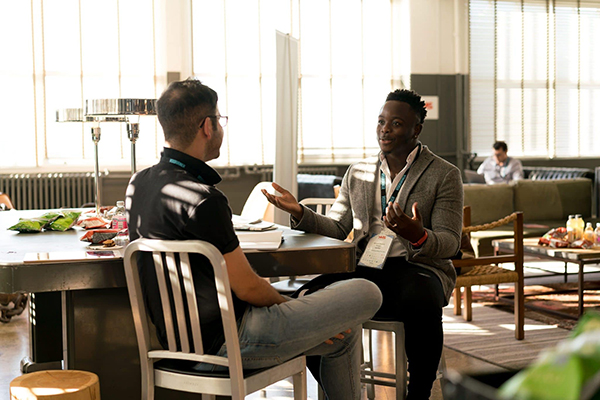
Workplace Readiness: The ability to absorb messages and then weave those goals into the fabric of the business takes strong communication skills. It can’t be underestimated.
Rush, Bryan Adams, Styx, and Kansas.
Classic rock from the ‘70s, ‘80s, ‘90s.
We do some Foo Fighters. We write original music. We dropped a single that my son and I worked on together. We are The Remainders. Look us up on Facebook. We dropped the single. It was a lot of fun.
What’s the name of the single?
Hitchin’ a Ride.
You are an interesting guy. You do a lot of fascinating things. What’s next?
I’ve got a second book swimming around in the back of my head. We’ve got the Balancing Act Podcast that we are dropping season two. I’ve got another podcast that’s in the works. I’m going to be talking about courage in the workplace that will be a big part of it. We are moving forward. The band is going to drop more music later this summer and early 2022. We are also going to be developing a workbook for Balancing Act because the book is more about the what and the why and less about the how. I’m putting together a workbook to allow the constructs that are woven into the balancing act and allow leaders and managers to bring those concepts to life for their teams.
I did something similar with my curiosity. I wrote the book, Cracking the Curiosity Code and co-authored The Power of Perception. Both of them created the Curiosity Code Index and the Perception Power Index. What those do are they not only tell you where you stand in terms of what’s holding you back but how to move forward. Those companion pieces are important when you have these great books that give you this background, all the stories and things you want to know about a topic but then the addition of all that is helpful. I did the same thing and that’s critical. What’s your next book going to be? You said you have one in your head?
I’ve got the title and the structure. The title is, I was, I am, I will Become: Tales of a Lifelong Learner. Most of the book will be the ‘I was’ stories and very specific, what did I learn from that episode in my life? How does it influence now and most importantly, what can you, the reader, learn from that particular story? The I will become, I’ve already got the first page written of that section and it’s a blank page that will fade into the written word. Our futures are, in many respects, written at least our near-term futures by what we have done and what we are doing-especially what we have learned and become educated on. Those things influence our future. The future is not absolutely a blank page but it is a tapestry and a canvas on which to paint more.
[bctt tweet=”If you’re only about work and you’re all about work, then you’re really missing something deep and meaningful in your life.” via=”no”]That’s a great place to end. That is so true. Many people are going to want to find your book, find you and find out more. Is there any other site you would like to share on how they can find you?
You can find me on LinkedIn. You can find me on Twitter, Instagram, Facebook, and the book is on Amazon, Barnes & Noble and any other place that you buy books from, Balancing Act is out there. The podcast is on Audible and in any of the other major podcasts sources.
This was fun, Andy. We could talk to you all day because we have so much that we would like to study and learn about. That was similar. Thank you for being my guest.
Thank you, Diane. I appreciate it.
You are welcome.
—
I would like to thank Andrew for being my guest. We get many great guests on the show. We covered so much important territory. Many past guests came to mind as we were talking. I mentioned a few of them, Doug Conant who I have interviewed a couple of times in different realms. We are also on Twitter, Facebook and LinkedIn. You name it, you can find us there. It’s interesting to look at how this ties into some of the other guests like Daniel Goleman, Amy Edmondson, Francesca Gino, you name it. I have had some of the best experts in the field of engagement, curiosity and collaboration. All of these topics tie so well into some of those conversations. I hope you take some time to go to DrDianeHamilton.com. If you go to DrDianeHamilton.com/blog or click on the blog once you get there, you can find the blog episodes.
You can search in the upper left-hand corner for any of the topics or anything you are interested in learning more about. If you put in soft skills, I know we are not allowed to call it that after this show, or human skills now, you will find this show. If you put in some of the different topics that you find interesting, it will pull up a range of guests. We are in the thousands now of guests who have been on this show. They are experts from Harvard, to Hall of Fame speakers, to billionaires to geniuses in general, in different corporate environments. I hope you take the time to explore the site because there’s a wealth of content. A lot of our guests offer a lot of free content on their sites.
On my site, you can get a free copy of the chapter from Cracking the Curiosity Code. If you go to The Curiosity Code Index you can take the CCI. You can go there to buy the book if you are interested in buying the book. Everything at DrDianeHamilton.com has not only the radio show but the curiosity information, the perception information, The Power of Perception book and the Perception Power Index, you can take on the site as well. Checked out the drop-down menus at the top. You can get a lot more content if you go to Curiosity, your Perception information there or if you scroll down to the bottom to find out more testimonials and contact information. There is so much more at the bottom. You can’t fit it all in in the top drop-down menus. Make sure you explore the site.
I would love to hear from you. If you have been reading and want to connect on LinkedIn, tell me in the welcome connection that that’s where you have heard about it and I would love to connect with you and share anything I can help share to make you more curious and perceptive leader. That’s what this show is all about. We get so many great guests if you have missed any past episodes, you can definitely find them there. We are also all the radio stations and podcast stations and all that are all listed on the site. If you want to listen to it in any other areas, be sure to check that out. I hope you enjoyed the show. I hope you join us for the next episode of Take The Lead Radio.
Important Links:
- Balancing Act: Teach Coach Mentor Inspire
- Kaplan Professional
- Kaplan North America
- Purdue Global
- Amy Edmondson – Past Episode
- TED Talk – How to Turn a Group of Strangers Into a Team
- Doug Conant – Past Episode
- Olin Oedekoven – Past Episode
- Peregrine
- Daniel Goleman – Past Episode
- LinkedIn – Andrew Temte
- Willie Jolley – Past Episode
- Facebook – The Remainders
- The Remainders
- Balancing Act Podcast
- Cracking the Curiosity Code
- The Power of Perception
- Curiosity Code Index
- Perception Power Index
- Twitter – Andrew Temte
- Instagram – Andrew Temte
- Facebook – Andrew Temte
- Barnes & Noble – Balancing Act: Teach Coach Mentor Inspire
- YouTube – Diane Hamilton
- Twitter – Diane Hamilton
- Facebook – Diane Hamilton
- LinkedIn – Diane Hamilton
- Francesca Gino – Past Episode
About Dr. Andrew Temte
 Dr. Andrew Temte, CFA, is President and Global Head of Corporate Learning at Kaplan North America.
Dr. Andrew Temte, CFA, is President and Global Head of Corporate Learning at Kaplan North America.
A thought leader on issues related to workforce reskilling and upskilling, his articles have appeared in a number of media outlets including Chief Executive and Chief Learning Officer.
He is the author of Balancing Act: Teach Coach Mentor Inspire.
Love the show? Subscribe, rate, review, and share!
Join the Take The Lead community today:

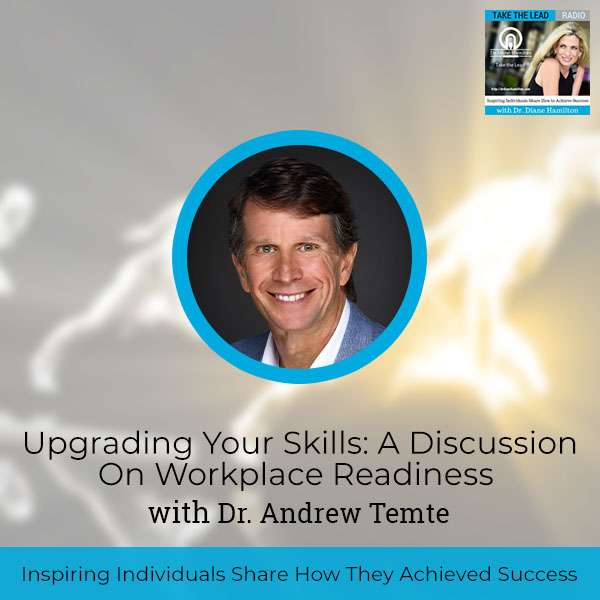
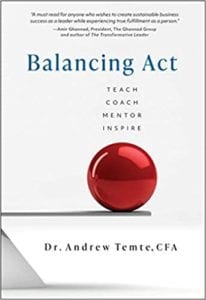
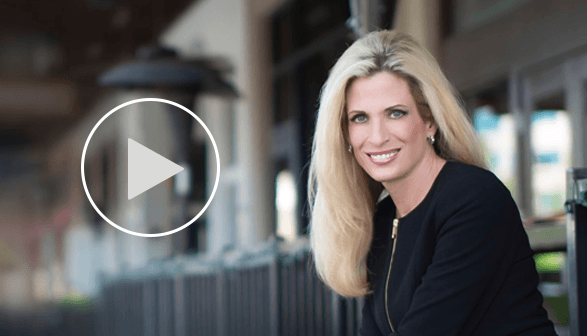
0 Comments